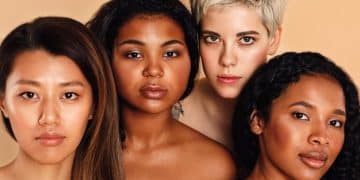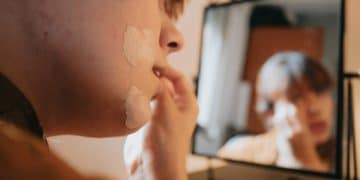How to Choose the Right Blush for Your Skin Tone
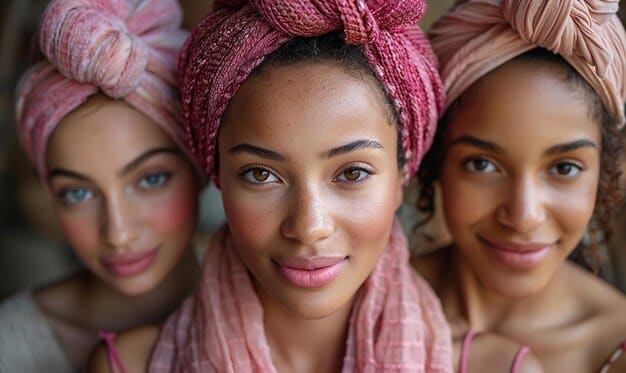
Anúncios
Choosing the correct blush is pivotal for enhancing your natural complexion, requiring an understanding of undertones and formulations to achieve a harmonious and radiant look that complements your skin’s unique characteristics.
Selecting the perfect blush can significantly elevate your makeup look, adding a healthy flush and dimension to your face. Mastering How to Choose the Right Blush for Your Skin Tone involves understanding subtle nuances about your complexion, beyond just picking a pretty color. This guide will walk you through the essential steps to find your ideal shade, ensuring a natural, radiant finish every time.
understanding your skin’s undertone
Before diving into specific blush shades, it’s crucial to understand your skin’s undertone. Your undertone is the subtle hue beneath the surface of your skin that affects its overall color. It’s different from your skin’s surface color, which can change due to sun exposure or conditions like rosacea. Identifying your undertone is the first and most critical step in choosing makeup shades that truly complement you, creating a seamless and natural appearance rather than a jarring contrast.
There are generally three main categories of undertones: cool, warm, and neutral. Each category responds differently to various color palettes, making certain blush shades more flattering than others. Getting this right prevents your blush from looking too orange, too pink, or simply “off” against your skin.
How to identify your undertone
There are several methods you can use to determine your unique undertone. Each method offers a slightly different perspective, and using a combination can help confirm your assessment, leading to a more accurate understanding of your skin’s natural coloring.
- The Vein Test: Look at the veins on the inside of your wrist in natural light. If they appear blue or purple, you likely have cool undertones. If they look green, you probably have warm undertones. If you find it hard to tell, or they appear a mix of both, you might be neutral.
- The Jewelry Test: Consider whether gold or silver jewelry looks better on your skin. Silver typically complements cool undertones, while gold enhances warm undertones. If both look equally good, you’re likely neutral.
- The White Paper Test: Hold a piece of pure white paper next to your bare face in natural light. If your skin appears more pink, rosy, or blueish, you have cool undertones. If it looks more yellow, peachy, or golden, your undertones are warm. If you see a mix or no distinct color, you’re likely neutral.
Understanding your undertone is foundational. It acts as a guide, narrowing down the vast array of blush options to those that will naturally enhance your complexion, rather than clashing with it. This knowledge empowers you to make informed decisions for all your makeup purchases, not just blush, ensuring a more cohesive and flattering overall look.
blush shades for cool undertones
For individuals with cool undertones, the goal is to select blush shades that echo the natural rosy flush of their skin. These undertones tend to have a bluish or pinkish hue, and the right blush will complement this intrinsic coolness, rather than fighting against it. Opting for colors that lean towards cool tones themselves will create the most harmonious and natural-looking effect. Think of colors that bloom like a fresh rose or have a subtle berry undertone, bringing a vibrant yet soft pop of color to the cheeks.
Classic choices for cool undertones often include hues that mimic a natural flush after a brisk walk or a gentle blush from excitement. These shades prevent the skin from looking sallow or dull, instead imparting a lively and healthy appearance. The key is to avoid anything too orange or overtly warm, which can create a noticeable contrast rather than a seamless blend.
Recommended shades and effects
When selecting blush for cool undertones, focus on shades that contain hints of blue, pink, or purple. These colors enhance the natural coolness of your skin, providing a fresh and vibrant look. The right shade can make your complexion appear brighter and more youthful, adding a touch of elegance without overwhelming your features.
- Soft Pinks: Light, delicate pinks are excellent for fair skin with cool undertones, offering a subtle, youthful glow.
- Berry Hues: Deeper berry or plum shades work beautifully on medium to dark cool-toned skin, providing a richer, more sophisticated flush.
- Mauve: A versatile shade that lies between pink and purple, mauve can complement a wide range of cool undertones, adding a touch of understated elegance.
- Dusty Rose: Slightly muted pinks with a hint of coolness are universally flattering for cool undertones, creating a natural, everyday look.
The effect of these shades is often one of understated elegance and natural beauty. They don’t just sit on the skin; they blend into it, becoming an extension of your natural complexion. Ultimately, the best blush for cool undertones is one that makes your skin look alive and radiant, as if the color is coming from within. It’s about enhancing, not masking, your innate beauty, aligning with your skin’s natural temperature and giving it that vibrant, healthy glow.
blush shades for warm undertones
Individuals with warm undertones possess a natural golden, peachy, or yellow hue beneath their skin’s surface. The ideal blush for these undertones will enhance this inherent warmth, bringing out a sun-kissed radiance and a healthy glow. The right shades will infuse the complexion with a vibrant, natural warmth, avoiding any clash that might make the skin appear sallow or overly red. Think of colors that mirror the warmth of a sunset or the gentle flush of a summer day, hues that naturally complement gold jewelry and earthen tones.
Selecting blush for warm undertones involves leaning into shades that contain hints of orange, yellow, and red, or those with a distinctly peachy or coral base. These colors blend seamlessly with the skin’s natural warmth, creating a coherent and flattering finish. The goal is to achieve a look that appears effortlessly sun-kissed and vibrant, rather than artificial or out of place. Avoiding overly cool or stark pinks is key, as these can look jarring against warm complexions, disrupting the overall harmony of the face.
Recommended shades and effects
For warm undertones, shades that lean towards the warmer side of the spectrum are most flattering. These include a beautiful array of corals, peaches, and even some terracotta or bronze-infused options. Each of these shades works to illuminate and enhance the skin’s natural inclination towards golden hues, providing a radiant and healthy appearance. The beauty of these colors is their ability to brighten the complexion, making it look vibrant and full of life, as if truly kissed by the sun.
- Peach: A classic for warm undertones, peach blushes offer a soft, natural warmth that brightens the complexion without being too bold.
- Coral: A blend of pink and orange, coral shades provide a lively, fresh flush, especially flattering on medium skin tones with warm undertones.
- Terracotta: For deeper skin tones, terracotta shades with a hint of red or brown can create a sophisticated, sun-baked glow, adding depth and warmth.
- Bronze-infused blush: Blushes with a subtle shimmer of bronze can add dimension and a healthy, luminous finish, perfect for a natural glow.
These blushes bring a vibrancy to the complexion, making it look healthy and alive. They mimic the natural flush that occurs when your skin is at its most radiant, creating an effect that is both subtle and impactful. The right warm-toned blush integrates seamlessly, enhancing your features without standing out as an obvious component of your makeup. It’s about achieving a beautiful synergy between your skin’s natural undertones and the chosen blush color, resulting in a luminous and inviting look.
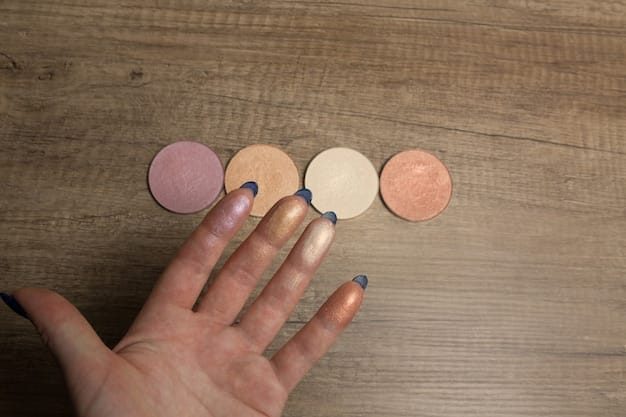
blush shades for neutral undertones
Neutral undertones offer a unique versatility in the world of blush. This skin type has a balanced mix of warm and cool tones, making it adaptable to a broader spectrum of shades without clashing. For those with neutral undertones, the aim is often to enhance the natural radiance of the skin with a color that offers a harmonious blend, neither too warm nor too cool. It’s about finding that sweet spot that complements both the pinks and yellows inherent in the complexion, allowing for a diverse range of choices that can be adjusted based on personal preference or the overall makeup look. This flexibility is a significant advantage, as it opens up many possibilities for experimentation and personal expression in makeup application.
The beauty of neutral undertones lies in their ability to pull off a wide variety of hues with ease. There’s less risk of a shade looking artificial or out of place, provided it’s applied with the right technique. The key is to look for blushes that have an even balance of pigments, often described as “true” colors without an overwhelming lean towards either extreme of the color spectrum. This balance allows the blush to adapt to the skin’s inherent neutrality, providing a natural, seamless pop of color that enhances rather than competes with the complexion. It’s an opportunity to play with different effects, from a subtle, healthy flush to a more pronounced, sculpted cheekbone, all while maintaining a natural appeal.
Recommended shades and effects
People with neutral undertones have the luxury of choosing from a wide range of blush colors. The most flattering shades are often those that strike a balance between warm and cool, providing a naturally harmonious look. These versatile shades can adapt to different makeup styles and lighting conditions, always looking just right. This adaptability allows for greater creative freedom, enabling individuals to select a blush that not only suits their skin but also aligns with their desired makeup aesthetic, whether it’s a soft, barely-there flush or a more vivid statement.
- Peachy Pinks: A blend of warmth and coolness, these shades are universally flattering, offering a natural, healthy glow.
- Soft Berries: Muted berry tones add a touch of sophistication without being too overpowering, perfectly complementing neutral skin.
- Rose: Classic rose shades, neither too warm nor too cool, are ideal for everyday wear, providing a subtle, natural flush.
- Nude Tones: Blushes in nude or muted brown-pink shades can create a soft, sculpted effect that looks incredibly natural on neutral undertones.
The effect of these shades is one of effortless beauty. They blend seamlessly with the skin, appearing as if the color is emerging from within, creating a fresh and vibrant look that enhances the natural complexion. This versatility means that individuals with neutral undertones can experiment with a wider array of blush products, finding shades that not only complement their skin but also reflect their personal style and the mood they wish to convey. Ultimately, the right blush for neutral undertones is one that adds depth and radiance without disturbing the innate balance of the skin, offering a polished yet natural appearance.
considering skin depth and intensity
Beyond undertones, the depth of your skin tone plays a significant role in selecting the perfect blush. What might look subtle on fair skin could disappear on a deeper complexion, and vice versa. The intensity of your natural skin color determines how vibrant or muted a blush shade should be to achieve the desired effect. The goal is to ensure the blush enhances your features, providing definition and a healthy flush that is neither too faint nor too overwhelming. It’s about finding that sweet spot where the color harmonizes with your natural skin tone, adding to your overall radiance.
Matching the intensity of the blush to your skin depth ensures that the color appears natural and integrated. For darker skin tones, highly pigmented blushes are often necessary to ensure the color shows up vibrantly. On the other hand, lighter skin tones may only need a sheer wash of color to achieve a noticeable, yet natural, flush. This consideration prevents the blush from either being lost against the skin or appearing too stark and unnatural, ensuring a balanced and flattering finish every time. It’s an essential step in refining your blush choice, moving beyond just the undertone to embrace the full spectrum of your skin’s unique characteristics.
Fair to light skin tones
For fair to light skin tones, a delicate touch is key. Colors that are too dark or too bright can easily overpower the complexion, appearing harsh rather than flattering. The aim is to create a soft, natural flush that mimics a genuine blush, adding a hint of color without dominating the face. Light, sheer formulas are often ideal, allowing for buildable coverage that can be adjusted to personal preference.
- Recommended Shades: Light pinks, soft peaches, and apricot tones.
- Application Tip: Apply sparingly and blend well. A cream or liquid blush can offer a more natural, dewy finish.
Medium skin tones
Medium skin tones have a wider range of options, capable of carrying more pigment without looking unnatural. These complexions can benefit from slightly deeper or more vibrant shades that still offer a natural appeal. The right blush will add warmth and definition, enhancing the skin’s healthy glow without being overly subtle or too intense.
- Recommended Shades: Warm rose, coral, mauve, and warmer berry shades.
- Application Tip: You can be a bit more generous with application, building up the color to your desired intensity.
Deep to dark skin tones
Deep to dark skin tones truly shine with rich, vibrant, and highly pigmented blushes. Shades that might appear very bold in the pan often translate beautifully on deeper complexions, providing a stunning pop of color and luminosity. The key is to choose shades that offer enough intensity to stand out against the skin, adding life and dimension. Berry, plum, and terracotta shades, along with deep oranges, can be incredibly flattering, bringing out the skin’s natural richness and warmth.
- Recommended Shades: Deep berry, plum, terracotta, rich fuchsia, and bright oranges.
- Application Tip: Don’t shy away from vibrant colors. These will provide the best contrast and most beautiful effect.
Understanding how skin depth interacts with blush intensity is vital for achieving a harmonious and radiant look. It ensures that the blush complements, rather than competes with, your natural complexion, providing a finish that is both subtle and impactful. This tailored approach leads to a more polished and naturally beautiful appearance, highlighting your best features. It’s about embracing the richness of your skin tone and finding colors that allow it to truly glow.
blush formulations and finishes
The world of blush isn’t just about color; it’s also about formulation and finish. The texture of your blush can dramatically alter its appearance on the skin, influencing how long it lasts, how natural it looks, and what kind of glow it imparts. Choosing the right formulation depends on your skin type, desired finish, and even your application preference. Different formulas offer varying levels of intensity and blendability, each designed to achieve a specific effect, from a sheer wash of color to a more defined sculpted look. Understanding these differences empowers you to select a blush that not only matches your skin tone but also elevates your overall makeup style, ensuring a cohesive and flattering result.
From powders to creams, liquids, and tints, each type of blush has unique characteristics. Powder blushes are known for their longevity and matte or satin finishes, while creams and liquids often provide a dewy, more natural radiance. Tints offer a stain-like effect that lasts all day. The finish—whether matte, satin, shimmer, or dewy—also plays a crucial role in how the blush interacts with your skin and the ambient light. A matte finish will provide a more subdued look, ideal for everyday wear, while a shimmery or dewy finish can add a luminous highlight, perfect for evening events or when a bit of extra glow is desired. The key is to balance these factors with your skin’s needs and your personal aesthetic to find your perfect blush companion.
Types of blush formulations
Each blush formulation offers a unique application experience and finish. Knowing the pros and cons of each type can help you decide which is best suited for your skin type and desired look, ensuring a flawless and long-lasting application that enhances your natural beauty. Experimenting with different formulas allows you to discover what truly works best for your individual needs.
- Powder Blush: The most common form, great for oily to combination skin. Offers buildable coverage and a wide range of finishes (matte, satin, shimmer). Applied with a brush, it provides long-lasting wear.
- Cream Blush: Ideal for dry or mature skin, offering a dewy, natural finish. Can be applied with fingers or a brush, melting into the skin for a seamless look. Provides a youthful glow.
- Liquid Blush: Highly pigmented and offers a natural, stain-like finish. A little goes a long way. Best for a sheer, long-wearing flush. Works well on all skin types but requires quick blending.
- Gel/Tint Blush: Provides a natural, sheer wash of color that stains the skin. Very long-lasting and ideal for a “no-makeup” makeup look. Perfect for all skin types, especially those seeking durability.
Selecting the right finish
The finish of your blush contributes significantly to the overall effect of your makeup. Whether you prefer a subtle enhancement or a more glamorous statement, understanding the different finishes will guide you toward the perfect product. This choice can transform your look from day to night, or from casual to formal, highlighting your skin’s best attributes and complementing your desired aesthetic effortlessly.
- Matte Finish: Provides a subtle, natural looking flush without any shine. Great for oily skin or for a more understated, everyday look, offering a sophisticated dimension.
- Satin Finish: Offers a soft sheen, mimicking a natural, healthy glow. It’s versatile and flattering on most skin types, adding a touch of radiance without being too shimmery.
- Shimmer Finish: Contains fine glitter or pearl particles for a luminous, radiant effect. Perfect for adding a highlight to the cheeks, creating a more glamorous or illuminated look, especially for evening wear.
- Dewy Finish: Often found in cream or liquid blushes, this finish gives a fresh, hydrated look. Ideal for dry or mature skin, providing a youthful and plump appearance, enhancing natural luminosity.
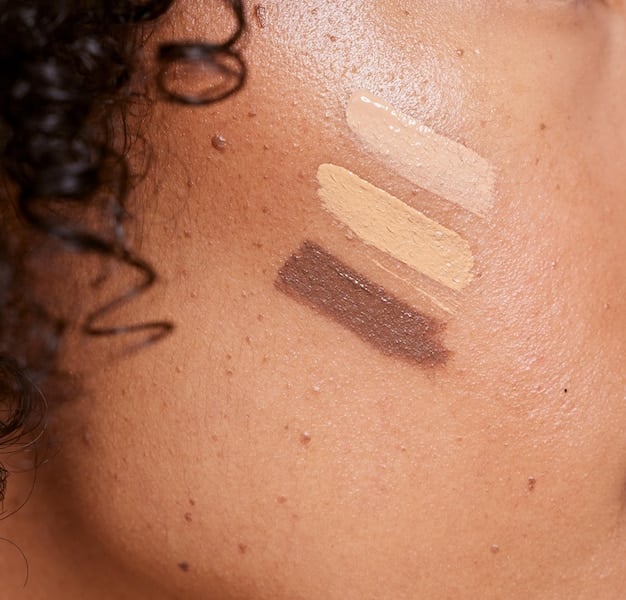
By considering both the formulation and the finish, you can fine-tune your blush choice to perfectly match your skin type, preference, and the occasion. This meticulous approach ensures that your blush doesn’t just add color, but also enhances your skin’s texture and natural luminosity, providing a polished and coherent appearance. It’s about finding that balance where the product enhances your natural beauty rather than sitting on top of it, creating a seamless and radiant effect that lasts all day.
application techniques for a natural flush
Even with the perfect blush shade and formulation, the application technique is paramount to achieving a natural, seamless flush. How you apply your blush can transform it from a harsh streak of color to a soft, radiant glow that looks as though it’s coming from within. The goal is to enhance your natural bone structure and add a healthy vibrancy to your complexion, rather than creating an obvious patch of color. Mastering these techniques ensures that your blush appears effortlessly beautiful, an integral part of your overall look.
Different application methods cater to various face shapes and desired effects. From a light dusting across the apples of the cheeks to a more sculpted application along the cheekbones, each technique serves a distinct purpose. The tools you use, whether a fluffy brush, your fingertips, or a sponge, also play a significant role in the end result. By understanding and practicing these methods, you can tailor your blush application to best suit your features and achieve a flawless finish every time, enhancing your natural beauty with precision and artistry.
Mastering blush application
Achieving a natural blush effect requires thoughtful application. The area where you apply blush and the way you blend it are critical for a flattering outcome. Different face shapes can benefit from targeted application, emphasizing natural contours and bringing balance to the features. This approach creates a harmonious and natural look, making the blush appear as a part of your skin rather than an added layer, providing a beautiful, radiant finish.
- Identify Your Face Shape: This will guide where to best apply blush.
- Round face: Apply blush slightly higher on the cheekbones, extending towards the temples to create a lifted effect.
- Oval face: Apply on the apples of the cheeks and blend upwards towards the hairline for a classic, natural look.
- Square face: Soften angular features by applying blush in a circular motion on the apples of the cheeks, blending towards the temples.
- Heart-shaped face: Apply blush along the cheekbones, blending towards the ears, to balance the wider forehead with a narrower chin.
- Start with a Light Hand: It’s always easier to add more product than to take away. Begin with a small amount and build up the intensity as needed, ensuring a natural transition.
- Blend, Blend, Blend: Seamless blending is crucial for a natural look. Use a clean, fluffy brush, a damp beauty sponge, or your fingertips to gently diffuse the edges of the blush until it melds with your skin. Ensure there are no harsh lines, creating a soft, airbrushed finish.
Tips for different formulations
The texture of your blush dictates the best application method to ensure a smooth, even, and natural finish. Adjusting your technique based on whether you’re using a powder, cream, or liquid blush will enhance its performance and longevity. Each formulation has its own unique properties, and understanding how to work with them will lead to a more polished and professional-looking result, making your blush appear effortlessly perfect.
- Powder Blush: Use a fluffy brush for a diffused look. Tap off excess product before applying. Apply in light, sweeping motions for a natural finish, building layers if more intensity is desired.
- Cream/Liquid Blush: Apply directly to the skin using your fingers, a damp sponge, or a dense synthetic brush. Pat and blend motions work best to melt the product into the skin, avoiding streaking. Apply before setting powder for the most natural effect.
- Gel/Tint Blush: Dab a small amount onto the apples of your cheeks or cheekbones and quickly blend into the skin with your fingertips or a sponge. These formulations set fast, so speed is key for an even application, providing a long-lasting stain.
Mastering these application techniques will allow you to achieve a beautiful, natural flush that enhances your features rather than overwhelming them. It’s about creating depth, warmth, and a healthy glow that looks authentic and luminous, ensuring your blush always complements your unique beauty, becoming an invisible yet impactful part of your overall makeup look.
| Key Aspect | Brief Description |
|---|---|
| 🎨 Undertone ID | Crucial for harmonious blush choice: cool hints of pink/blue, warm with gold/peach, or versatile neutral. |
| 🌈 Shade Matching | Cool tones favor soft pinks/berries; warm tones thrive with peaches/corals; neutrals are versatile. |
| 💧 Formulation Choice | Powder for oil control, cream/liquid for dry skin, gel/tint for longevity/natural stain. |
| ✨ Application Art | Apply based on face shape, using light hand; blend seamlessly for a natural, radiant flush. |
frequently asked questions about blush
While both add warmth and dimension, bronzer typically adds a sun-kissed glow, used for contouring or overall warmth, not a natural flush. Blush, conversely, emulates the natural rosy color of cheeks, providing a healthy pop of color. Using bronzer in place of blush might make your face appear sallow or overly tanned, lacking the vitality blush provides.
To extend blush wear, start with a well-prepped and moisturized base. Apply a primer before foundation. For powder blush, set it with a light dusting of translucent setting powder. For cream or liquid blushes, apply them before powder products. Layering a cream blush under a powder blush in a similar shade can also significantly boost longevity.
Matching your blush and lipstick isn’t a strict rule, but coordinating them can create a cohesive and polished look. They don’t need to be exact; rather, aim for shades within the same color family or undertone (e.g., both warm-toned or cool-toned). This harmony prevents clashing and ensures your makeup looks balanced and aesthetically pleasing.
Matte blush offers a flat, non-reflective finish, ideal for a natural, everyday look or for subtly sculpting the face. Shimmer blush contains fine glitter or pearl particles, providing a luminous, radiant glow that highlights the cheekbones. Matte is excellent for oilier skin, while shimmer adds dimension and is great for dry or mature skin seeking a glow.
Typically, no. Contouring aims to create shadows and define features, usually with cooler, muted brown or grey-toned products that mimic natural shadows. Blush adds color and warmth to the apples of the cheeks. Using blush for contouring would likely result in an unnatural, overly rosy, or orange-tinged shadow, which defeats the purpose of contouring.
conclusion
Choosing the right blush is an art form that significantly enhances your overall makeup look, transforming your face from flat to fabulous with just a touch of color. By meticulously understanding your skin’s undertone—whether it’s cool, warm, or neutral—and considering your natural skin depth, you unlock the secret to selecting shades that truly complement your complexion. Beyond color, the formulation and finish of your blush play a pivotal role, influencing everything from longevity to the final aesthetic, while proper application ensures a seamless, natural-looking flush. This comprehensive approach, moving beyond simple color preferences to a more nuanced understanding of skin science and product properties, empowers you to create a radiant, healthy glow that appears effortlessly perfected. With these insights, you’re now equipped to navigate the vast world of blushes, making confident choices that highlight your best features and elevate your beauty routine, ensuring your cheeks always look vibrant and alive.
